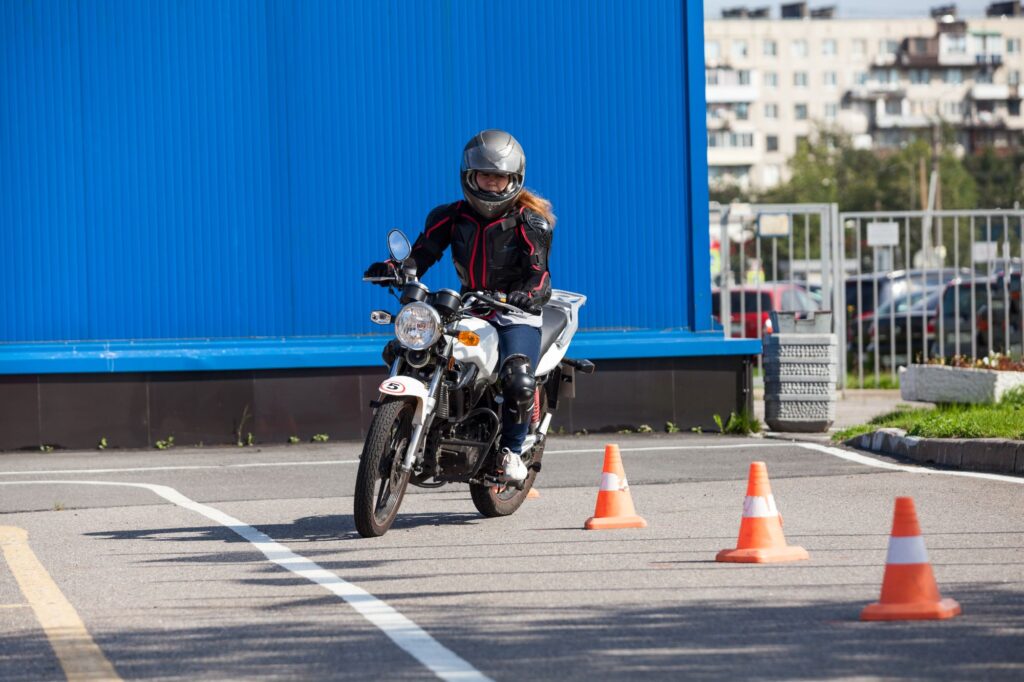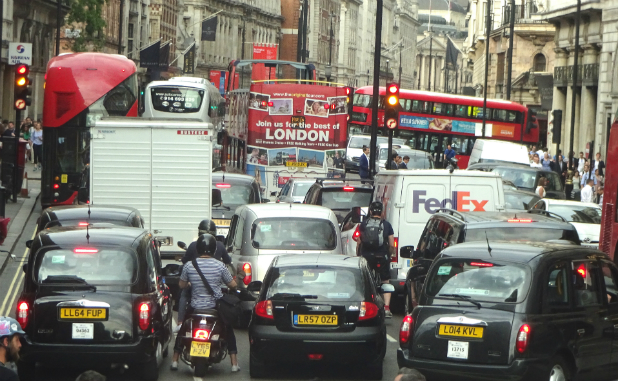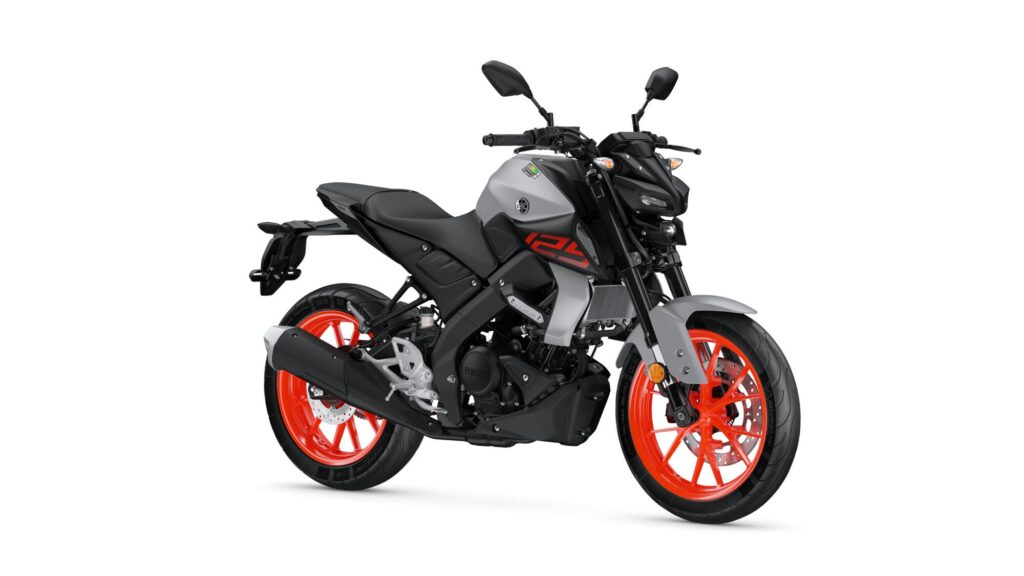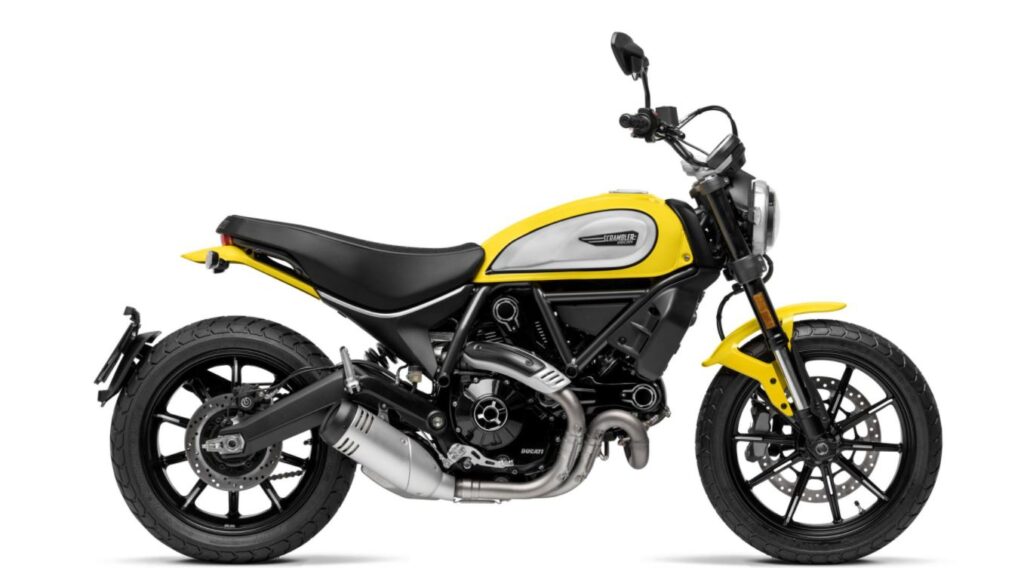
Ahead of New Riders day at Motorcycle Live Online 2020, we took a look at the best London boroughs for new riders to commute to on their scooters and mopeds.
In this article, we reveal the best London boroughs for commuting via moped or scooter and share the benefits of moped travel, from convenience to journey time.
Despite lockdown easing across the UK, social distancing remains a top priority for many people, as the nation works hard to defeat COVID-19. With offices and other workplaces beginning to reopen, commuting by public transport – where germs are easily spread from person to person – carries a health risk.
In London, one of the country’s most popular cities for commuting by public transport, many people will be looking for alternative ways to get to work. Based on its low running costs and ease of travel, we can’t think of a better way to commute than by moped or scooter.
Find out below the best areas to live if you want to commute to the City by moped and discover the reasons we rate moped commuting as London’s top travel option.
Top London boroughs for commuting by moped or scooter
If you’re living in London or looking to make the move, it’s important to consider the pros and cons of your borough. As commuting by moped or scooter becomes a more attractive option, we wanted to find out the best areas to travel from to the City of London. That’s why we created the Moped Commuting Index.
Our index considers essential commuting factors, such as travel time and fuel cost, against house prices – one of the most important cost of living considerations for Londoners. By combining these aspects, we can reveal that the best boroughs for commuting by moped are:
1. Redbridge
Our top borough for commuting by moped or scooter, Redbridge, is situated to the North East of the City of London in Underground Zone 4. Its main towns – Ilford, Woodford and Wanstead Flats – are popular with commuters due to the low house prices. In fact, at just £300,000, Redbridge boasts the lowest average house prices within the M25. Commuting by moped to the City of London can take as little as 30 minutes with a fuel cost of around 65p.
2. Barnet
With a commute of less than 30 minutes in good traffic, Barnet is another great option for moped or scooter riders travelling into the City of London. The borough’s plethora of golf courses and Hampstead Heath to the south, push the average house price up to £654,000, but with a fuel cost of just 34p each way for your commute – or even less if you ride an electric moped – you’ll make some great savings. The most well-known areas of Barnet include Edgware, High Barnet and East and West Finchley.
3. Haringey
To the north of the City, spanning Undergrounds Zones 3 and 4, you’ll find Haringey – home to the world-renowned Alexandra Palace and the popular town of Tottenham. The borough claims a short commute time to the City of London, sometimes just 30 minutes, and will only cost you around £1 in fuel for the round trip. With reasonable house prices – an average of £445,000 – it’s easy to see why Haringey made it into our top three.
4. Havering
Out in Zone 6, on the eastern side of Greater London you’ll find Havering – one of London’s largest boroughs. Home to the medieval town of Romford, the region offers some of London’s lowest houses prices, with an average of £395,000. While the minimum commute is around 40 minutes by moped or scooter, at only 74p each way, it’s a fantastic option for two-wheeled commuters.
5. Lambeth
Stretching south from the Thames down to Crystal Palace is the borough of Lambeth. Being just across the river from the City of London, commute times can be as short as 24 minutes and a round trip on a moped or scooter can cost as little as 80p. Despite being home to the trendy towns of Brixton and Clapham as well as London’s world-famous cultural centre, of South Bank, the average house price is just £390,500.

The full Index is listed below:
- Redbridge
- Barnet
- Haringey
- Havering
- Lambeth
- Merton
- Hackney
- Brent
- Kensington and Chelsea
- Harrow
- City of Westminster
- Greenwich
- Hounslow
- Ealing
- Southwark
- Sutton
- Hillington
- Croydon
- Camden
- Bexley
- Barking and Dagenham
- Richmond upon Thames
- Enfield
- Islington
- Lewisham
- Wandsworth
- Tower Hamlets
- Waltham Forest
- Newham
- Bromley
- Kingston upon Thames
- Hammersmith and Fulham
The benefits of commuting by moped or scooter
You can save money on travel
Before you start commuting by moped, it’s worth totting up how much it will cost. While the vehicle itself may be a big upfront expense, you’ll find it cheaper than buying a new car or taking the Underground.
Costs: moped vs public transport

With an Oyster Card, the cost of a single ticket in Zone 1 is £2.40 and £5.10 between Zones 1-6. When travelling into the city every working day, you could spend up to £2,732 on travel each year – or £13,660 over five years!
This is only expected to increase, as the cost of tube tickets has increased by around 2.8% in 2020 alone. As inflation continues to grow (five years ago inflation was at 0.5% and has now risen to 1.8%), it is likely that tickets for all public transport will increase in price – making mopeds and scooters a reliably cost-effective source of travel for years to come.
Even if you allow for the moped itself, £500 for MOTs, services and insurance and £2,000 for secure parking, commuting by moped still comes in cheaper.
Cost to consider for commuting by moped or scooter
Moped or scooter
Prices for a new moped or scooter range from around £1,999 – £5,000 for a petrol model and £1,375-£5,000 for electric. Second-hand mopeds and scooters will be even cheaper.
Fuel
An additional expense is fuel costs, and obviously the further you live from the city, the more petrol your moped will use. However, riding a moped can be incredibly economic.
Data gathered for our Moped Commuting Index reveals that the cheapest average journey to the City of London would be 12p, from Westminster, while the most expensive trip would be from Hounslow at a cost of just 97p. Our average across all London boroughs is just 50p. Although similar, scooters differ from mopeds and scooter engines range from 50cc to 750cc and mpg vary. One of the most popular scooters on the market, the Honda PCX, has a 125cc engine and averages 115.8mpg. A trip from Hounslow to the City of London would come in at about 84p.
Electric mopeds and scooters will be even cheaper to run than petrol vehicles – up to 30p for a full charge – and are more environmentally friendly!
Insurance

On top of the cost of the bike, you will have to pay insurance on your vehicle. Insurance prices vary depending on the vehicle and any modifications it has, your insurance history – such as any convictions, your No Claims Bonus – and how you store it. Read our guide to insuring your moped here.
Protective gear
Don’t forget the other upfront costs of the crucial protective gear. If you’re going to be travelling by moped or scooter, you’ll need a helmet, either leather or textile jacket and gloves. A helmet can range from around £40 to £500, while your jacket can be as little as £90 or over £1,500. You can easily find a pair of decent motorcycle gloves for under £20. Thankfully, once you have bought the gear, you won’t have to buy more for a long while.
Tax, charges and other costs
You should also consider the cost of your MOT, motorcycle tax, and the ULEZ charge given to those entering central London in a vehicle (electric vehicles are exempt – another reason to make the move to zero-emissions). If your workplace doesn’t have free, secure parking for your moped or scooter, you will also need to factor in parking charges – which can be as low as £4.60 per day if you book in advance and pay monthly.
Considering all these costs may seem daunting, but travelling in London by public transport may stretch your purse strings even further.
You can stay safe and healthy
Social distancing is still a priority for most people and being able to avoid crowded spaces or lift shares where germs can spread is the top priority for many. As such, travelling into the city without sharing your space – as is the case on public transport, the Tube or even in a car – is paramount.
We can see from the figures released by the government that public transport use has significantly dropped during 2020. At the end of April, at the peak of lockdown, only about 5% of National Rail and London Underground services were in use. By the start of August, despite social distancing rules being eased, only 25% of National Rail services and 27% of Underground services were in daily use, while road traffic usage has matched pre-lockdown highs. The statistics are clear: people are not yet comfortable commuting by public transport.
Regardless of Covid-19, for many people using public transport is a stressful experience. Whether crowds of people give you anxiety or being on the Tube makes you feel claustrophobic, commuting by public transport can’t compete with the freedom and personal space offered by a moped or scooter.
According to a 2020 report, “stress can be induced by a lack of control, associated with congestion, crowding and unpredictability, and mood is found to be generally lower than during other daily activities.”
Being able to ride a moped or scooter into the city will be a relief for many. A moped not only offers control over your commute – not having to fit your morning around train schedules, being able to ‘beat the traffic’ – but also gives the rider a leisurely, stress-free start to the day.
You can reduce your travel time

Mopeds offer the rider agility – either filtering or overtaking the slow-moving or stationary traffic to reach a destination faster than the average car or bus. For cars, having to stop and start in traffic can really hinder speed, whereas mopeds and scooters can accelerate to their top speeds again much quicker.
We’ve all been there – sat in a car during a traffic jam, frustrated and tired, and seen a motorcycle or moped zip past. As the UK’s most populous city, London is notorious for bad traffic. In 2018 alone, London saw 18.4 billion vehicle miles of traffic travelled across the 9.2 thousand miles of roads. The majority of this figure (76%) was accounted for by cars and taxis. Motorcycles and scooters, however, only sat in traffic for 400 million vehicle miles.
Research for the Bikesure Moped Commuting Index reveals that commuting by motor vehicle in London is up to 26.5% faster than commuting by public transport. And when comparing public transport to just motorcycles, one study suggests a potential time saving of 53%.
When commuting by moped or scooter, you must remain within the law. Only ever filter or overtake traffic when it is safe to do so, otherwise you could be convicted of dangerous driving.
It’s convenient!
Travelling around London by public transport often includes several stages to the journey. Whether that’s a walk or drive to the train station, swapping trains or Underground lines at the next station then walking into the office, you could find yourself having to move around a lot. That’s not to mention any tight time frames to get on your next train or bus.
When using a moped or scooter, your journey is door to door. You do not have to wait for a train or bus, nor do you have to rush to catch one. You have control of your journey and the route you take – making the journey both convenient and enjoyable.
Summary
There are multiple benefits to riding a moped around London, from the fun and the freedom to being more cost-effective and convenient. We’ve even created the Bikesure Moped Commuting Index to show the best London boroughs for 50cc commuters!
Key benefits of commuting with a moped or scooter:
- You have control over your journey
- You can avoid the stress of crowds and delays
- You will get stuck in fewer traffic jams
- You can practice social distancing
- You don’t have to rush or wait for trains and buses
- You can travel door to door
- You can save money
Insure your moped
Bikesure offers specialist insurance for mopeds, helping you keep your overheads down with competitive quotes. Ensure your bike is covered when riding around London by contacting us today.
Notes on index methodology:
We ranked 32 London boroughs (all excluding City of London) by house price (source), min/max travel time by road and by public transport (using Google Maps), distance to travel and fuel cost. Fuel cost was worked out by average fuel price and a 49CC engine doing 100mpg.
House price was used to help people balance the value of commuting to work on a moped, rather than just show the shortest distances. Inner boroughs are usually more expensive to live in, so while they may have the shortest commute, they are not the most viable option.
All options were grouped and ranked from least to most (lowest number being best) apart from public transport, which was ranked most to least to ensure we were capturing where commuting by moped competes with public transport. Rankings for each aspect were combined into a total. The Index is the total ordered from least to greatest.





